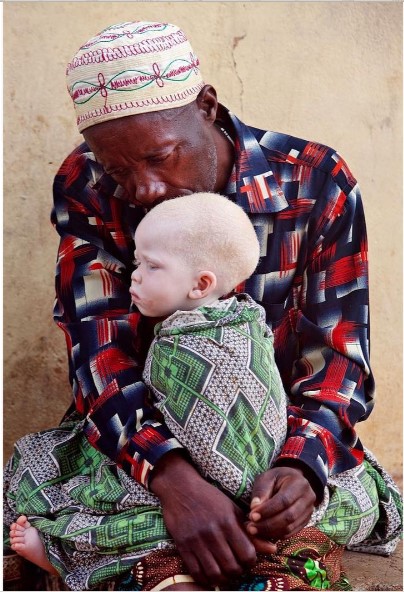

Traveling is always enlightening. You could call it a pay-as-you-go open university. Learning of the suffering the African Albinism population endures was one such lesson for me of just how cruel human kind can be.
I tagged along with a friend to a barber and sat next to an Albino boy. As soon as my friend took out his phone to take some haircut before-and-after selfies, the Albino boy was up and gone.
His reaction is not surprising when you understand the suffering that people with Albinism can be subjected to; prejudice, discrimination, and being treated like outcasts in their own society.
The Scientific Facts
Scientifically, Albinism is a genetic condition which affects the bodies ability to produce melanin. For Albinos the lack of melanin results in very pale skin, hair and eye colour. And the associated side effects can include vision problems along with increased sensitivity to the sun for the skin and eyes.
Bad enough they have to deal with side effects, but it’s the social side effects that can be far more debilitating. The main catalyst for the social injustice is a lack of education and fear. Instinctively, fear generates cruelties that are hard to believe for those of us not growing up surrounded by the beliefs.
Handed Down Superstitions
As is common in every culture, traditional myths get handed down through generations and the direct results of those myths are having real-life impacts for people with Albinism.
A staff reporter for the Malawian Weekend Nation Newspaper, Watipaso Mzungu grew up being told
“albinos don’t die, they disappear”
Other traditional tales include that giving birth to an Albino is a curse from the gods. That, parents were given an Albino baby as a form of punishment for some past indiscretion. In some countries, the result is extreme. Mothers in certain African countries have been killed after giving birth to an Albino child.
Sadly, statistics are providing evidence of an increased number of abductions, killings, and exhumations of Albino remains. The body parts and bones of an Albino are a marketable commodity with great worth for those dealing in witchcraft and for those that believe the superstitions. Superstitions that say the body parts will create wealth and provide good luck for those with them in their possession.
There are rumors of the existence of gangs working together as”Body Part Hunters”. Who will maim, kill and dig up the graves of those with the condition!
1 Although the population of Albinos is more prevalent in Sub-Sahara Africa with 1 in 5000 people born with the genetic condition. It actually affects 1 in 17,000 people across the globe. Including America, and some countries in Asian and Europe.
1 Quote Medicine News Today (MNT), 31st March 2016.
People are focusing on change through awareness and education:


 Sam - Journo and the Joker says
Sam - Journo and the Joker says
September 20, 2016 at 6:44 amGreat post Jacqui! Great to highlight this issue. So sad that there is so much misunderstanding and superstition surrounding this. Loving your blog!
 Gill Sainsbury says
Gill Sainsbury says
September 20, 2016 at 11:59 amWell documented Jacqui. A highly sensitive issue and one which touches my heart living here in Tanzania, your post is spot on. Moshi town is widely recognised as a “safe haven” for Albinos however the issues and problems are, as you say, entrenched within local tribes superstitions and beliefs.